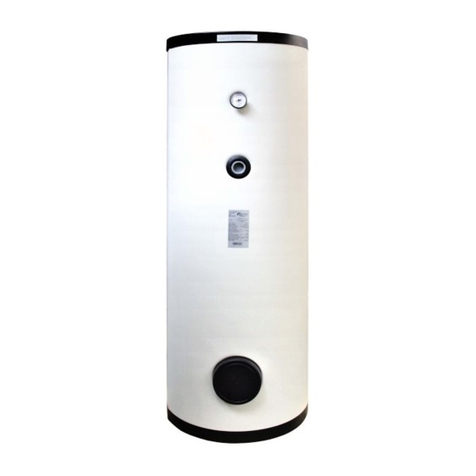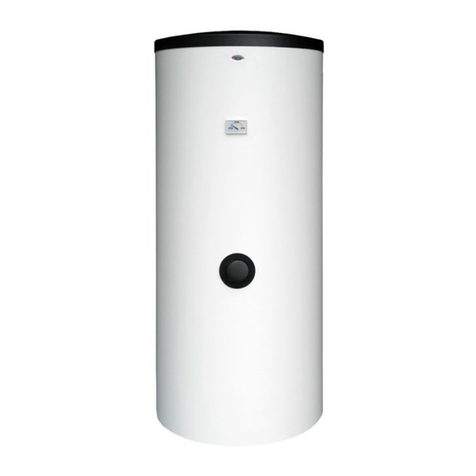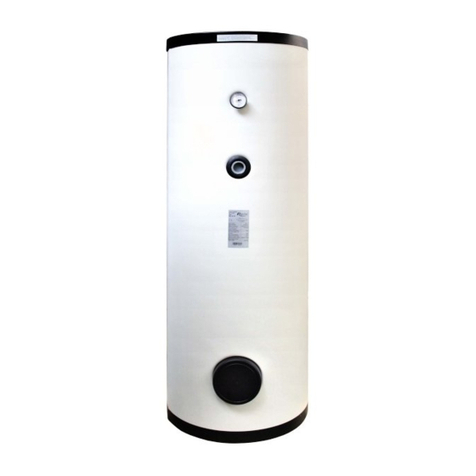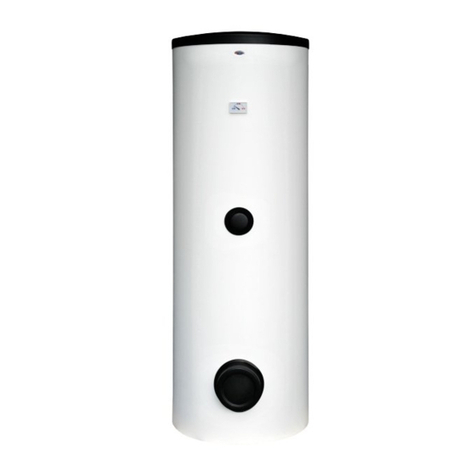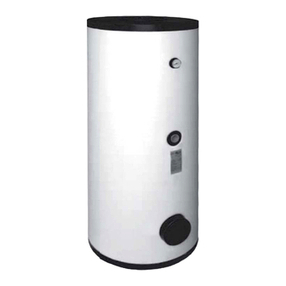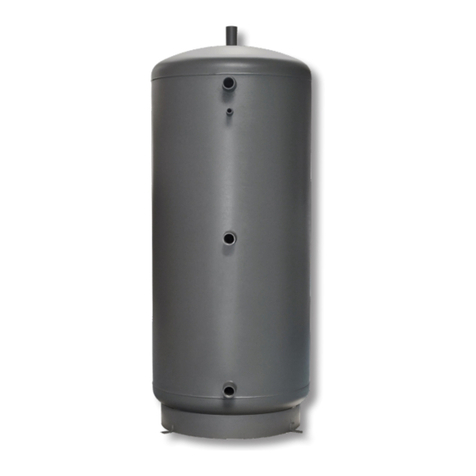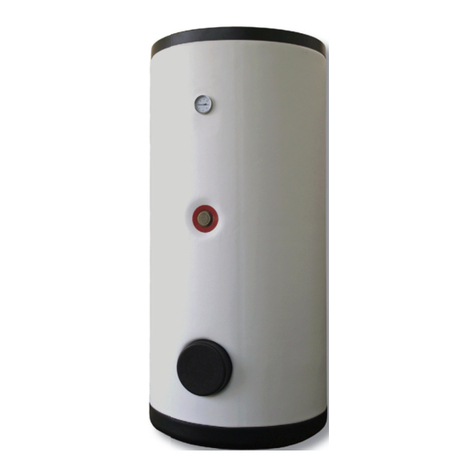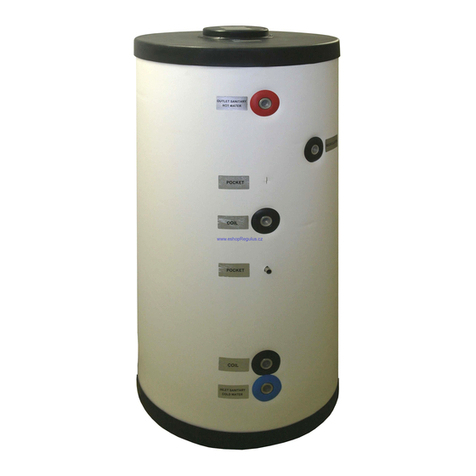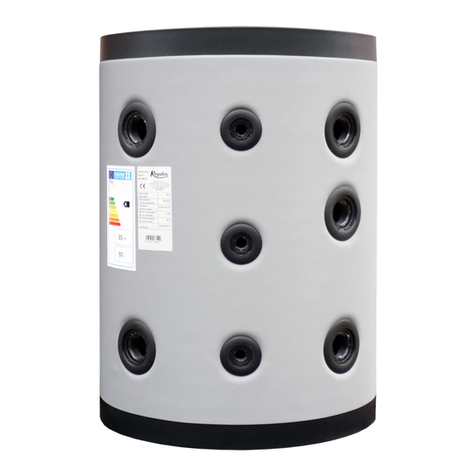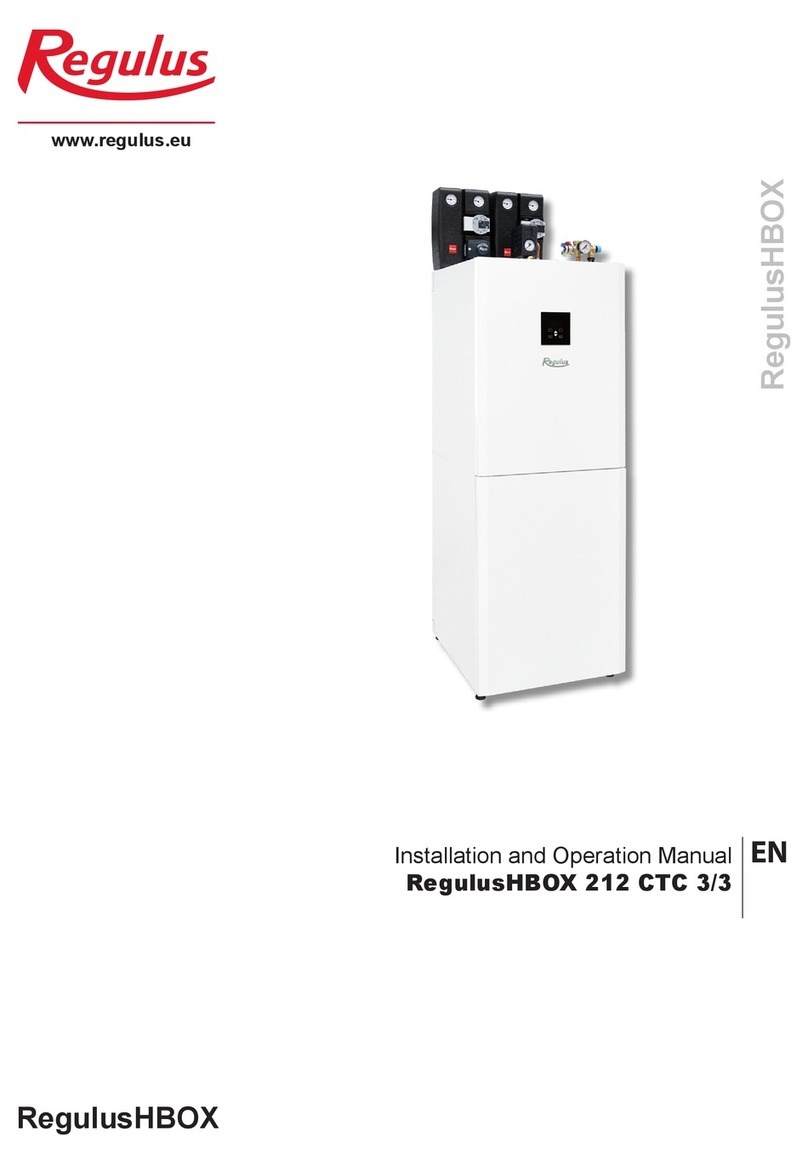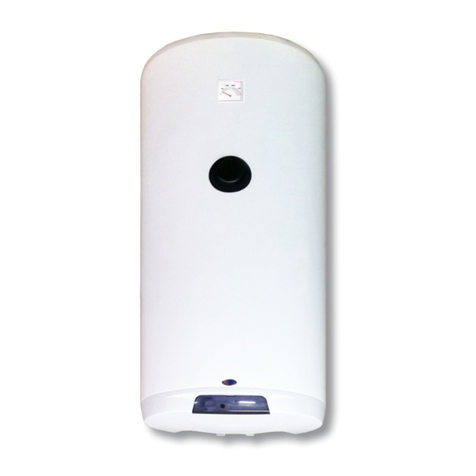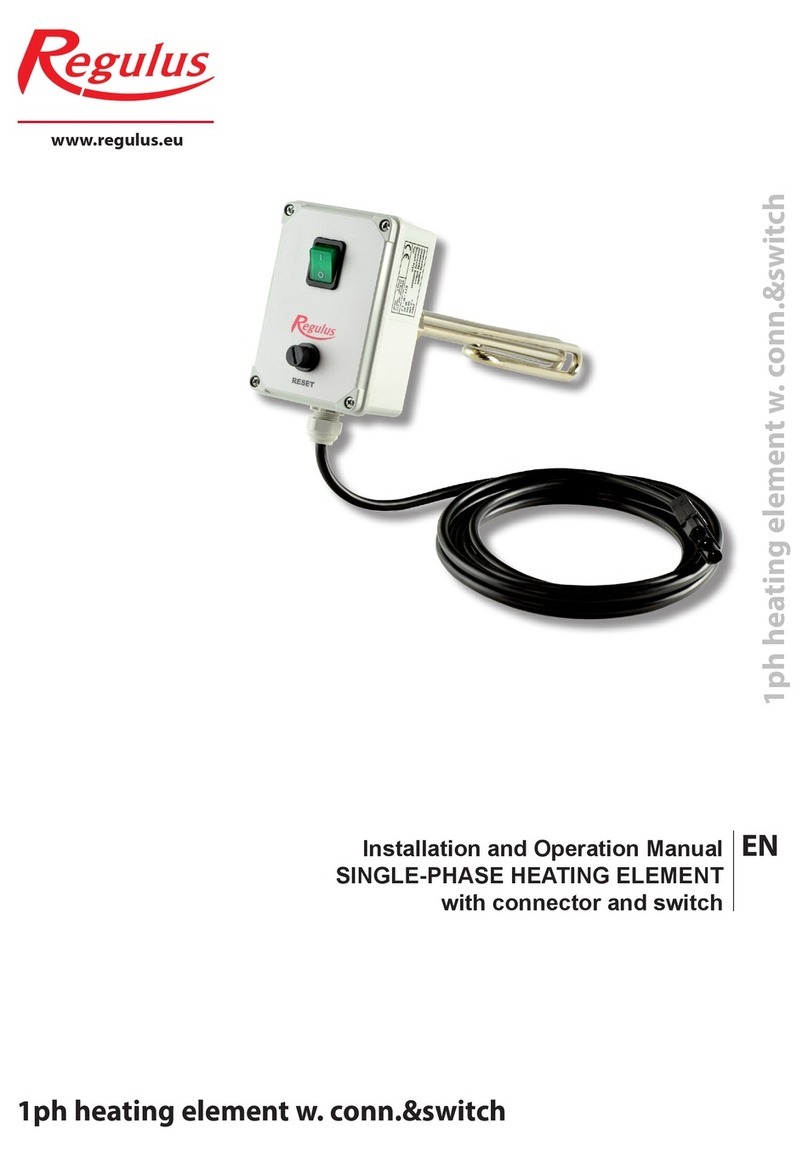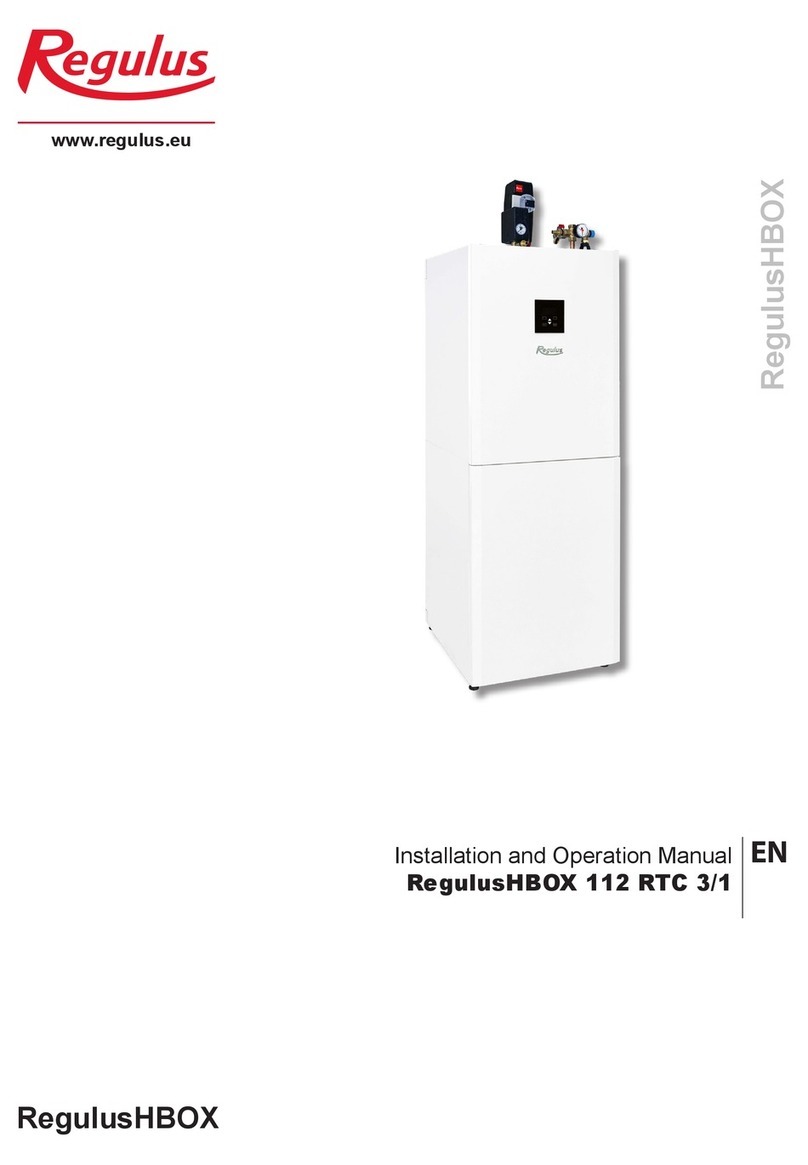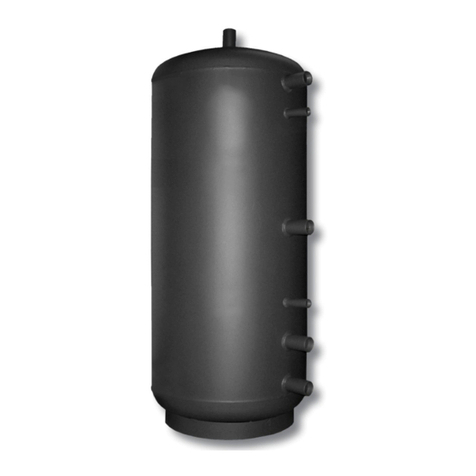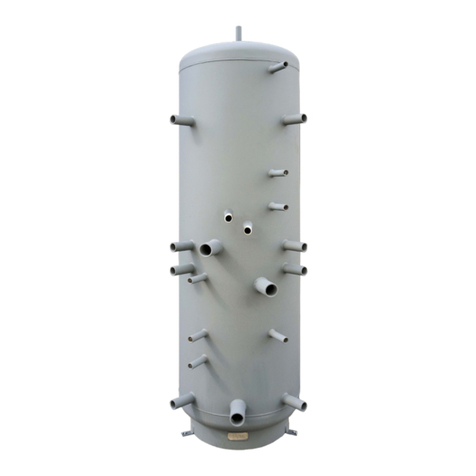
7 │
6 - Installation and Commissioning
Installation shall meet valid rules and may be done by qualified staff only.
Defects caused by improper installation, use or handling are not covered by warranty.
After the tank is installed and connected to an existing heating system, it is recommended to clean the entire heating system
using a suitable cleaning agent, e.g. BP 400.
Anti-corrosion protective liquid should be also used in the heating system, e.g. BP 100 Plus.
6.1 - Connection to heat sources
Place the tank on the floor and level it. Fit the insulation, cf. Installing Insulation on the tank. Connect the heating
system according to the recommended connection layout to connections B1 and B2 - see Chap. 5. Install a drain valve
into the connection V. Install an air vent valve at the highest point of the system and into the connection O. Insulate all
the connecting piping.
6.2 - Connection to water mains
DHW piping shall be done according to valid rules. Tank connections incl. the fittings (connections W1 and W2) is shown
in the diagram of the recommended connections – see Chap. 5. A pressure reducing valve and a safety kit should be
installed at the cold water inlet. If the pressure from water mains exceeds 6 bar, a reducing valve is necessary. It is also
recommended to install an expansion vessel at the cold water inlet with a minimum volume of 4% of the total water
volume in the DHW piping incl. heat exchangers, recirculation pipes etc. (usually 8 l). Should the water be too hard,
install a water softener upstream of the tank. In case the water source contains mechanical impurities, install a filter.
6.3 - Commissioning
The tank shall be filled up together with the heating system, respecting valid standards and rules. In order to minimize
corrosion, special additives for heating systems should be used. The quality of heating water depends on the quality of
filling water at commissioning, on the top-up water quality and on the frequency of topping up. This has a strong influence
on the lifetime of heating systems. Poor quality of heating water may cause problems like corrosion or incrustation, esp.
on heat transfer surfaces.
Quality of DHW shall meet the conditions shown in the Table of limit values for total dissolved solids in hot
water on this page of this Manual.
Fill the heating circuits with the appropriate fluids and air-bleed the entire system. Check all connections for leaks and
verify the system pressure. Set the heating controller in compliance with the documentation and manufacturer’s
recommendations. Check regularly proper function of all control and adjustment elements.
Table of limit values for total dissolved solids in hot water
Description pH Total dissolved solids (TDS) Ca Chlorides Mg Na Fe
Max. value 6.5 - 9.5 600 mg/l 40 mg/l 100 mg/l 20 mg/l 200 mg/l 0.2 mg/l
7 - Installing Insulation on the Tank
Product description
Thermal insulation is a part of the hot water tank, preventing its heat loss. For easier handling, the insulation shall not
be fitted on the tank until it reaches its definite place of installation.
The insulation is 100 mm thick, after installation on the tank it is compressed to a thickness of 80mm.
Warning
Insulation installation shall be done in two persons. Do not use any tools for installation. Keep away from open fire.
Installing insulation
1.Putthebottominsulationunderthetankandplacethetankfollowinginallationinructions.
2. Wrap the insulation around the tank carefully. Check that the insulation adheres to its body perfectly. This can be
reached by rubbing and patting the insulation by hand from its centre evenly in both directions until the insulation
adheres to the tank’s surface completely and no bubbles are left.
3. Use the holes for connections as a rest during the insulation installation.
4. At least one person presses the insulation to the tank, pulling both ends together. The other person closes the quick
lock from the side.
5. Put on the upper insulation and cover.
6. Push on the covering plastic rosettes depending on the size of connections.
7. Finish the tank installation in compliance with the respective instructions and valid standards and rules.
Warranty on insulation
□Warrantyshallbecomenullandvoidif:
○theproceduredescribedintheInstallationManualwasnotrespected,
○theproductwasusedforotherpurposesthanintended.
□Warrantydoesnotcover:
○usualwearandtear,
○damagecausedbyfire,water,electricityoranothernaturaldisaster,
